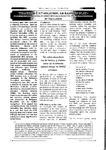Teaching Catholicism, as easy as play.
| dc.contributor.author | Lynch, TJ | en |
| dc.date.accessioned | 2015-12-28T18:06:15Z | |
| dc.date.accessioned | 2016-10-09T05:14:34Z | |
| dc.date.available | 2015-12-28T18:06:15Z | |
| dc.date.available | 2016-10-09T05:14:34Z | |
| dc.date.issued | 2004-10-01 | en |
| dc.identifier.issn | 1834-7258 | en |
| dc.identifier.uri | http://hdl.handle.net/10026.1/6327 | |
| dc.description.abstract |
In society, sport often connotes a religious reference. Sport as a medium for learning is directly related to the curriculum key learning area of Health and Physical Education (HPE), as it can be used as a vehicle for teaching the HPE concepts. The unique ‘learning through movement’ nature of HPE enables a focus on the physical dimension. Hence, sport interacts intimately with the strand ‘developing concepts and skills for physical activity’, which is embedded in the Queensland HPE syllabus. In the physical dimension students can be presented with many practical and social experiences that require acknowledgement and reflection upon Catholic religious traditions and gospel values. Therefore, within Catholic education, the HPE learning area is strongly connected to the Religious Education curriculum. By investigating how HPE can be a medium to promote the eight distinctive Catholic qualities identified by renowned Catholic educator, Thomas Groome (2002), the learning area’s importance and potential within the Catholic school context and connection to Religious Education can be further recognised. It is argued that connecting these two Catholic education key learning areas is a role that both the HPE learning area and teacher have willingly assumed and one that has become more significant in recent times. | en |
| dc.format.extent | 2 - 4 | en |
| dc.language | English | en |
| dc.language.iso | English | en |
| dc.publisher | Australian Catholic University | en |
| dc.relation.replaces | http://hdl.handle.net/10026.1/4060 | |
| dc.relation.replaces | 10026.1/4060 | |
| dc.title | Teaching Catholicism, as easy as play. | en |
| dc.type | Journal Article | |
| plymouth.author-url | http://media.wix.com/ugd/842c5e_f6c87f7138874a3faf133e8797f511d1.pdf | en |
| plymouth.issue | 2 | en |
| plymouth.volume | 77 | en |
| plymouth.publisher-url | http://trove.nla.gov.au/work/31961795?q&sort=holdings+desc&_=1451290820456&versionId=38799325 | en |
| plymouth.publication-status | Published | en |
| plymouth.journal | Catholic School Studies Journal. | en |
| plymouth.organisational-group | /Plymouth | |
| plymouth.organisational-group | /Plymouth/Faculty of Arts, Humanities and Business | |
| plymouth.organisational-group | /Plymouth/Faculty of Arts, Humanities and Business/Plymouth Institute of Education | |
| dc.publisher.place | Australia | en |
| dcterms.dateAccepted | 2004-08-03 | en |
| dc.rights.embargoperiod | No embargo | en |
| rioxxterms.licenseref.uri | http://www.rioxx.net/licenses/all-rights-reserved | en |
| rioxxterms.licenseref.startdate | 2004-10-01 | en |
| rioxxterms.type | Journal Article/Review | en |
| plymouth.oa-location | http://media.wix.com/ugd/842c5e_f6c87f7138874a3faf133e8797f511d1.pdf | en |


